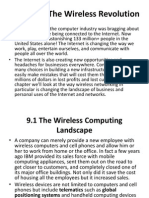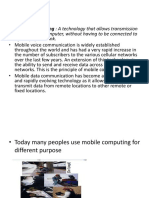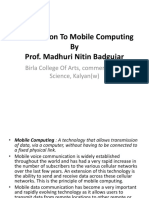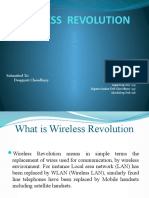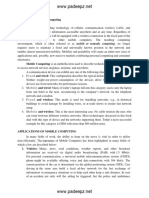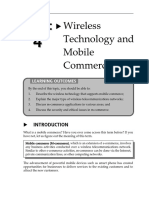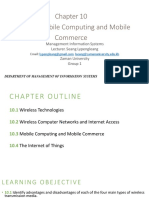0% found this document useful (0 votes)
55 views59 pagesWireless and Internet Revolution
The document discusses the transformative impact of wireless and internet technologies on business and personal communication, highlighting the rapid increase in internet connectivity and the emergence of mobile computing. It details various wireless technologies, including Bluetooth, Wi-Fi, and RFID, and their applications in enhancing business operations, customer engagement, and supply chain management. Additionally, it addresses the challenges and opportunities presented by mobile commerce and the need for businesses to adapt to the evolving digital landscape.
Uploaded by
Joenetha Ann ApariciCopyright
© © All Rights Reserved
We take content rights seriously. If you suspect this is your content, claim it here.
Available Formats
Download as PDF, TXT or read online on Scribd
0% found this document useful (0 votes)
55 views59 pagesWireless and Internet Revolution
The document discusses the transformative impact of wireless and internet technologies on business and personal communication, highlighting the rapid increase in internet connectivity and the emergence of mobile computing. It details various wireless technologies, including Bluetooth, Wi-Fi, and RFID, and their applications in enhancing business operations, customer engagement, and supply chain management. Additionally, it addresses the challenges and opportunities presented by mobile commerce and the need for businesses to adapt to the evolving digital landscape.
Uploaded by
Joenetha Ann ApariciCopyright
© © All Rights Reserved
We take content rights seriously. If you suspect this is your content, claim it here.
Available Formats
Download as PDF, TXT or read online on Scribd
/ 59
